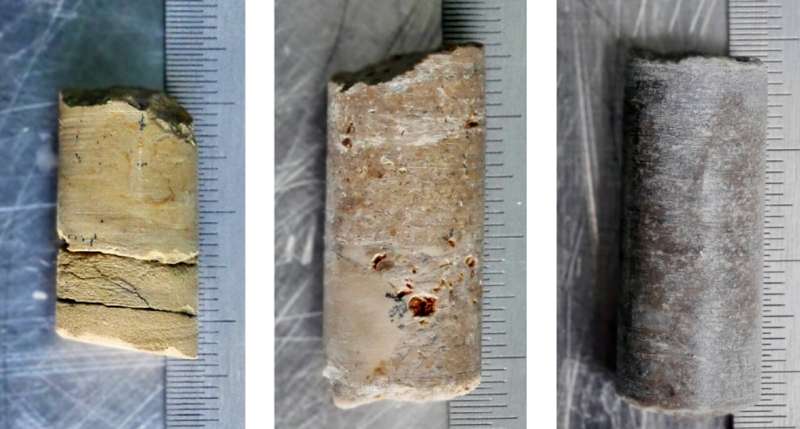This article has been reviewed according to Science X's editorial process and policies. Editors have highlighted the following attributes while ensuring the content's credibility:
fact-checked
peer-reviewed publication
proofread
Study shows limestone can serve as a repository of microbial genetic information about the deep biosphere

Most of the Earth's microbial biomass is hidden in the subsurface. According to estimates, microorganisms can be found at depth of up to five kilometers below the continental surface. Here they also colonize solid rock. Since this deep biosphere is difficult to access, researchers know little about the composition and role of these microorganisms in biogeochemical cycles.
A research team from Friedrich Schiller University Jena and its Cluster of Excellence Balance of the Microverse as well as other research networks and institutes have now discovered that limestone serves as an archive for microbial colonization of the subsurface. The first results of the study have been published in the journal Microbiome.
"We examined drill cores from a depth of up to 300 meters from the Thuringian Basin to gain insights into the biomass in solid rocks and the metabolic status of rock-dwelling microbiomes," says Dr. Carl-Eric Wegner, lead author of the study. "Based on previous research results, we assumed that the high calcium content in limestone could preserve the DNA of microorganisms, similar to dental calculus in mummies or skeletons. However, due to the low biomass in the rock, existing methods had to be adapted."
In order to extract the DNA contained in the rock samples for a so-called metagenomic analysis, the researchers adapted methods from microbial archaeology and palaeogenomics. "Our goal was to decipher the genetic information of microorganisms in the stones and to classify them both taxonomically and functionally," explains Prof. Dr. Christina Warinner, Professor of Microbiome Sciences at the University of Jena.
"We have also been able to detect genetic information from past microbial communities—so-called paleomes—in three rock samples. These give us information about which metabolic performances played a role when these microorganisms were still alive," says Prof. Dr. Kirsten Küsel, spokesperson of the Balance of the Microverse Cluster of Excellence, and initiator of the study.
The authors conclude that the study of limestone is particularly suitable because its properties favor the long-term preservation of genetic information. "Determining the age of endolithic DNA is the key to the geomicrobiological history of the subsurface," Küsel says.
More information: Carl-Eric Wegner et al, A glimpse of the paleome in endolithic microbial communities, Microbiome (2023). DOI: 10.1186/s40168-023-01647-2
Journal information: Microbiome
Provided by Friedrich-Schiller-Universität Jena




















